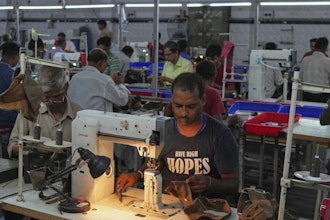India and China are two heavyweight contenders in the global manufacturing arena. As they spar in the ring, battling for your business, they take stock of each others’ advantages and disadvantages. India is eyeing China’s manufacturing base, as China is trying to match India’s IT expertise.
But which country will emerge as the top overseas destination? India, assuming it can fix its infrastructure issues.
India has the closest resemblance to Western operations—the English fluency, the democratic values, etc. China, on the other hand, has issues with protecting intellectual property rights and a shortage of labor.
According to Anand Sharma, CEO of TBM Consultancy, which trains companies in lean and kaizen, India is on track to replace China due to India’s high numbers of technical quality MBA graduates, as well as a cheap but loyal labor pool and a tendency to adopt lean methodologies.
“India definitely has great potential—its large population (made up of very high percentages of young people) is a very attractive feature of the country and is one of the factors that is allowing it to begin to run neck-and-neck to China,” said Billie Blair, an organizational/corporate psychologist. “It has a number of advantages and also is not bound up by efforts to discard the strictures of a communist regime.”
China may be the dominant force for manufacturing in the region, but India has room to grow, not to mention strength in design elements like engineering, according to Lisa Tromba of Battalia Winston International. India has the advantage over China in IT as well, considering China is known for its lax stance when it comes to intellectual property rights.
“While China has consistently invested in the hard infrastructure (like roads), its investments in the soft (like laws) have been often prompted by external, especially multinational corporations’ and foreign governments’ requests. India on the other hand, has failed to invest sufficiently in hard infrastructure but its competitive market policies have allowed soft infrastructure to flourish,” according to George T. Haley, Director of the Center for International Industry Competitiveness, University of New Haven.
Haley also notes that while China doesn’t have a globally recognizable company, India has several—Infosys and Tata Group, for example. And while China sees higher foreign direct investment, India sees higher returns on investment and equity. Haley added that India’s economic growth is domestic demand-based, rather than export-based like China’s.
Unfortunately, India is being held back by an infrastructure that is poor at best. Haley remarks that until recently, there were separate rail systems for the north and south—try factoring that into your supply chain.
“China has 19,000 miles of expressway, ten times as much as India, and six times as many mobile and fixed-line telephones per 1,000 people,” according to an article Haley wrote with his wife, Usha C. V. Haley, Director of the Global Business Center, University of New Haven.
Commenting on the poor state of electric power, the article continued: “In India, 61 percent of manufacturing firms own generators, compared with 27 percent in China, where the cost of power is 39 percent lower than in India.”
One of China’s most publicized disadvantages is the record-breaking-and-still-growing trade deficit with the U.S. While certainly not a good thing for U.S. manufacturers, it may not push companies towards India and also may serve as a caution for future overseas development.
Blair warns that “with shifts towards India, similar circumstances to those that were created with the trade deficit and the sub-prime imbroglio will be repeated through greater involvement in India.”
He adds however that “This might be a natural circumstance anyway, because foreign companies are more welcome in India, and, while there are certainly difficulties, the culture is more similar to that of the U.S. and a strong U.S. presence is definitely desired.”



















